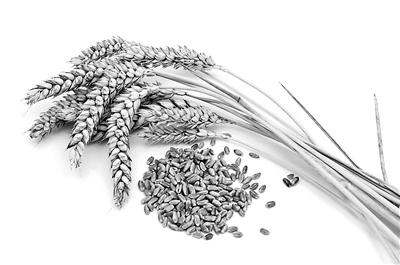How to eat high dietary fiber content in whole grains has a way to eat
Today, when healthy diets are increasingly being promoted, people pay more attention to choosing healthy foods. Eating more coarse grains and eating more dietary fiber has also become the consensus of health preservation.
Dietary fiber has a variety of health effects. Dietary fiber can be found in many health foods related to diabetes, gastrointestinal tract and weight loss.
The "Reference Intake of Dietary Nutrients for Chinese Residents (2013)" recommends that the daily specific recommended intake of dietary fiber for Chinese residents is 25 grams.
The "Guidelines for the Prevention and Treatment of Type 2 Diabetes in China (2017)" recommends that the daily recommended intake of dietary fiber for diabetic patients is 10-14 g/1000 kcal of energy.
Today we will talk about two or three things about dietary fiber.
What is the role of dietary fiber?
1. Dietary fiber has water absorption, absorbs water in the stomach and swells, increases the volume of stomach contents, slows down the gastric emptying speed, increases the feeling of fullness, and helps to lose weight.
2. In the intestine, it can increase stool volume and water content, promote bowel movements, and prevent or relieve constipation.
3. It can reduce the absorption of sugar in the small intestine, slow down the increase in blood sugar after eating, and help stabilize blood sugar.
4. Absorb bile acid in the intestines, reduce the absorption rate of fat, cholesterol, etc., and then reduce blood lipids.
5. It can be decomposed and fermented by intestinal bacteria, change the composition and metabolism of the intestinal microbial flora, and induce probiotics to multiply.
6. Help prevent the occurrence of bowel cancer, breast cancer, etc.
How to get enough dietary fiber?
The dietary fiber in food mainly comes from plant foods, such as fruits, vegetables, beans, nuts and various cereals.
The food processing method and precision have a great influence on the retention of dietary fiber.
Whole grains and wheat bran are rich in dietary fiber, while refined grains are milled and processed, and the husk, aleurone layer, and germs are separated and discarded, resulting in the loss of some nutrients, such as dietary fiber, B vitamins and minerals. Material loss.
Long-term consumption of refined grains can easily cause insufficient or even deficiency of B vitamins.
In the choice of staple food, it is recommended to match coarse and fine, often eat some coarse grains, whole grains and whole grains.
Rice can be paired with whole grain rice (brown rice), grains (oats, millet, buckwheat, corn, etc.), and mixed beans (red bean, mung bean, kidney bean, pinto bean, etc.) to achieve the thickness of the staple food.
In addition to coarse grains, vegetables such as celery, water spinach and other stem and leaf vegetables, kelp, laver, shiitake mushrooms and other fungi and algae, such as oyster mushrooms, shiitake mushrooms, kelp, laver, etc. are also rich in dietary fiber.
The "Dietary Guidelines for Chinese Residents (2016)" recommends 250-400 grams of cereals and potatoes per day, including 50-150 grams of whole grains and miscellaneous beans.
It is worth noting that although whole grains have many health benefits, patients after digestive system surgery or elderly people with reduced digestive system function need to consume them in moderation.
At the same time, there is a dazzling array of whole-grain foods on the market, and the selection of real whole-grain foods is also very important.
When choosing whole grain foods, pay attention to these 5 points
1. Types of raw materials
Should be coarse grains, such as corn, black rice, oats, etc.
2. Amount of whole grains
Food ingredients should contain a larger proportion of whole grains.
There is a reference data: the US Food and Drug Administration stipulates that foods containing ≥51% whole grains in ingredients can be claimed as "whole grain foods".
3. Look at food labels
For example, words such as "whole oats", "whole grain corn", "whole wheat flour" and other words are written, and they are consistent with the ingredients on the food label.
4. Food ingredients
For example, "nutritious oatmeal" with more white sugar and vegetable oil powder is far less healthy than "pure oatmeal", so it is recommended not to use it.
5. Learn to identify
Such as exaggerated promotion of "multi-grain", "high-fiber", "100% wheat", etc., because these foods may only add bran in order to increase the content of dietary fiber, but the germ part is missing.
Text/Dr. Ma Health Team, Dr. Zhang Na

